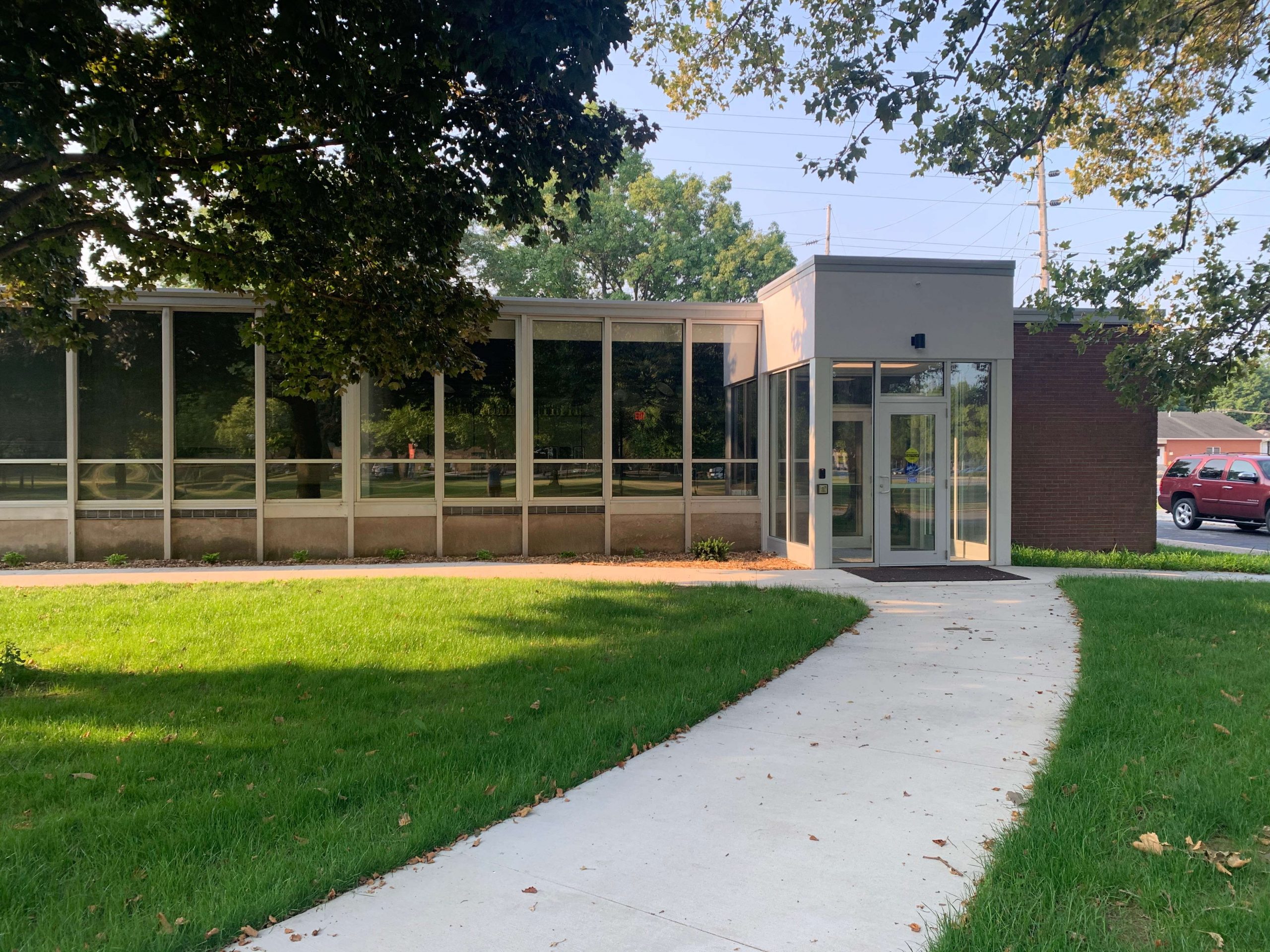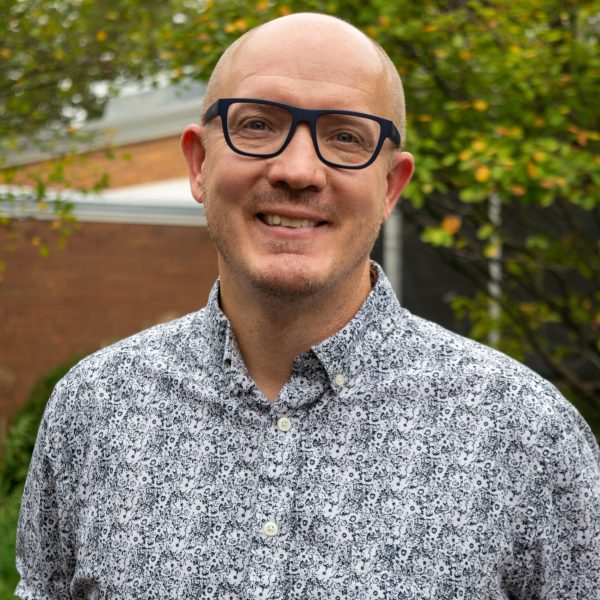
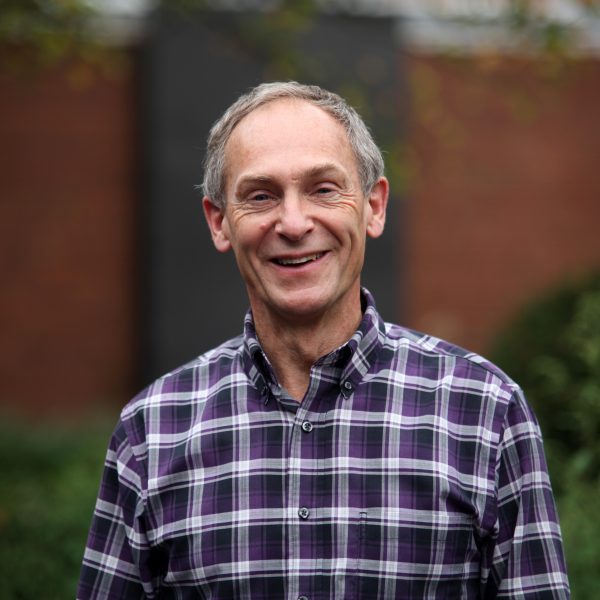
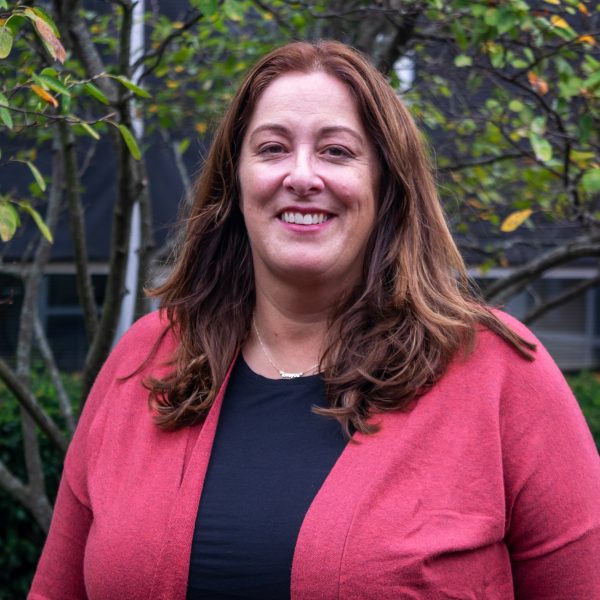
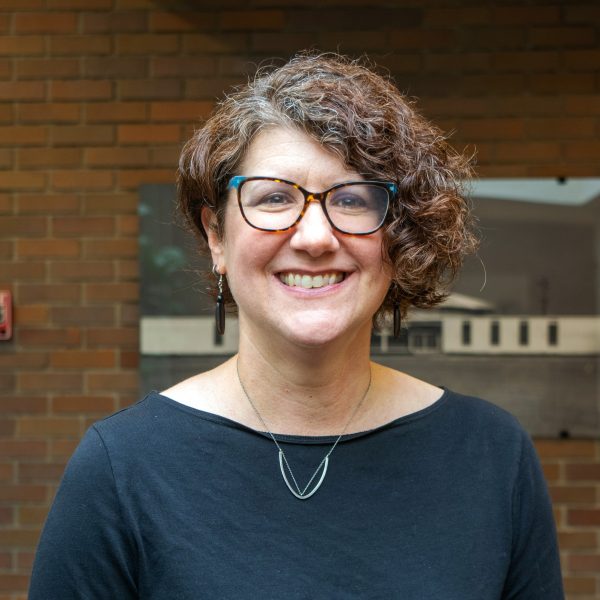
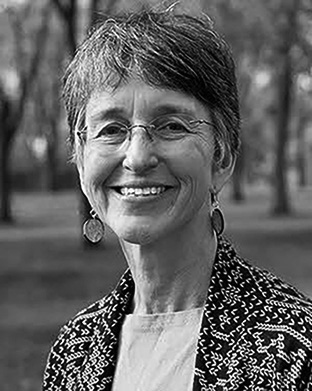
Goshen College will soon have a new hub for partnerships in the community, thanks to a total of $5 million in grants, from both the Lilly Endowment Inc. and the Community Foundation of Elkhart County. The grants will fund new programs and partnerships and make Newcomer Center the home of the Center for Community Engagement.
The Center for Community Engagement is Goshen College’s newest initiative to strengthen ties with the greater community, according to Suzanne Ehst, professor of education, director of the core curriculum and one of the four new directors of the center.
“We’re trying to work against what some people call the ‘town and gown’ divide, to strengthen the community,” Ehst said.
The other three directors of the Center are Dave Kendell, director of career networks; Jan Bender Shetler, director of international education; and Duane Stoltzfus, professor of communication and director of adult and graduate programs. Erika Buhring, executive director of the Center, was hired in August. Goshen College already has many programs that engage the community, but they are currently scattered around campus, with no centralized location.
Between the Community School of the Arts in the Music Center, English classes for adult speakers of other languages, SST Alt classes that engage the community and information technology certificates, GC already has a strong culture of community engagement, Ehst said.
However, she noted that, without a central location, it is harder to collaborate between programs.
By housing the Center for Community Engagement in the Newcomer Center, Goshen College will be attempting to create a centralized location for community members and students alike.
“When you centralize, sometimes that can be misconstrued as trying to control,” Buhring said. “It’s more of the mindset that we’re here to help make it an easier process … we’re not trying to change everything that’s going well.”
All of the directors will have offices in Newcomer, apart from Ehst, who will retain her office next door in the Church-Chapel with other members of the education department. The English department has already been temporarily relocated to the first floor of Wyse Hall to make room, but communication, business and accounting offices will stay in Newcomer.
Making Newcomer more accessible is part of a longer-term strategic plan for campus.
“Access points to the campus aren’t obvious to visitors,” Ehst said. “You drive down Main Street and it’s not obvious where the main entrance is.”
The Center for Community Engagement will mark one of the new main entry points to campus, along with a new entrance being built on 10th Street.
Newcomer is easily accessible from Main Street and has a large parking lot, two aspects that make the location appealing. It also houses the Center for Communication Studies, which includes 91.1 The Globe, a radio station whose signal extends throughout Elkhart County and beyond.
When explaining why GC was well-suited to receive the grant money, Ehst said, “I think we made a compelling case that we already do a lot of this, and that we have space to grow.”
She pointed towards SST as evidence that “we have community engagement deeply rooted in our DNA as an institution.”
Ehst noted that, although SST has been a part of the Goshen College curriculum for decades, there are gaps to fill in at home.
“We haven’t been as responsive to our local communities as we have been in international communities,” she said.
President Rebecca Stoltzfus agreed, saying that, although Goshen College has been successful as an institution so far, “the future thriving of Goshen College and Elkhart County are inextricably linked.”
“We can’t view ourselves as a little island of higher ed learning,” she said. She hopes that
the college can be an “anchor of positive change,” through increased student engagement in the community.
In order to organize volunteer and internship opportunities, the Center for Community Engagement plans to use an online program called GivePulse.
Using GivePulse, students will be able to sign up for opportunities and log their hours in one place.
“As the partners grow, they each have their own section,” Buhring said, “and then they can add events and students can keep track of how many hours.”
The site will also include a main calendar that will be populated with opportunities from all the partner organizations. Students who are interested in volunteering but don’t have a preference for a certain organization can see what is available and select a slot that works with their schedule.
“Part of the design is that it’s very accessible,” Buhring said.
The directors hope that if volunteering is more easily accessible, students will be more likely to participate.
“We’re really hoping our students get excited about this, too,” Kendall said, “because this is a great opportunity to get to know the community that we’re living in.”
The renovations in Newcomer will focus mainly on the lounge area, transforming it into a space with flexible seating that can switch between a seating area for students and also a reception area for community events.
New flooring is scheduled to be installed throughout the whole building during winter break, and the kitchen will be renovated.
They also plan on decorating the space with art that emphasizes Goshen College’s culture of service, specifically highlighting SST and other service initiatives.
According to Danielle Pagoria, administrative assistant in charge of the renovations in Newcomer, the ultimate goal is to create “a place where the community meets the campus.
Although the renovations have not yet begun, new initiatives are already underway. Rocio Diaz, director of community engagement and adult outreach, has been leading a series of workshops that aim to help immigrants, many of whom were professionals in their home country, get their qualifications acknowledged in the U.S.
“I’m really excited that our Goshen College students, both local and non-local, have a greater sense of community that they are embedded in,” Ehst said.
Kendall said the community will also have a better sense of the college: “We don’t want to be this region’s best-kept secret. There’s no reason for that. If you want to be a light, then you really do need to expand out into the community.”
